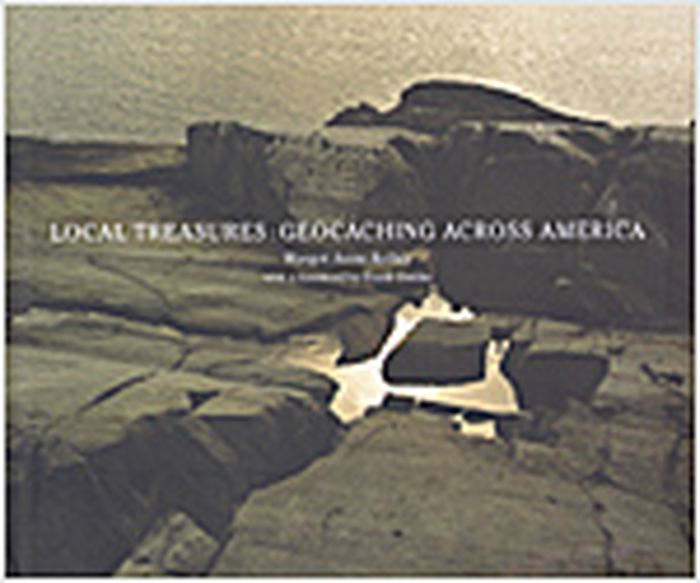Mårten Lange: Ghost witness
$67.95
(disponible sur commande)
Résumé:
China has a rich tradition of ghost stories and supernatural beliefs. There are tales of ghosts that can shape-shift, or turn into air, or pure darkness or light. In ''Ghost witness,'' Mårten Lange tells the story of a country rushing towards the future with the past following silently behind, like a spectre in the smog. In his time in China, Lange visited urban(...)
Mårten Lange: Ghost witness
Actions:
Prix:
$67.95
(disponible sur commande)
Résumé:
China has a rich tradition of ghost stories and supernatural beliefs. There are tales of ghosts that can shape-shift, or turn into air, or pure darkness or light. In ''Ghost witness,'' Mårten Lange tells the story of a country rushing towards the future with the past following silently behind, like a spectre in the smog. In his time in China, Lange visited urban metropolises that have expanded rapidly in recent years, as a result of hyper-accelerated growth and development. Walking through these megacities, Lange explores the bleeding edge between rationalised urban planning and messy everyday lives. ''Ghost witness'' engages with the unique quality of light in the urban environment, where the sun filters through the polluted air and the vast arrays of LEDs twinkle in the rain – revealing the world indirectly, like a mirror. The images in ''Ghost witness'' inhabit and replicate the machine-like rational logic of the grid to interrogate overlaps and fissures between architecture, technology, surveillance and the future. Lange’s precise photographs often describe those fissures: indecipherable codes, broken windows, decay and entropy within the order of glass and steel. Suspended in a liminal state between constant construction and expansion, Lange questions what it means for humanity to dwell inside environments that are planned, designed and repeated, with little recourse for history, transition and change.
Monographies photo
Privacy a manifesto
$24.95
(disponible sur commande)
Résumé:
What ever happened to privacy? The simple right to be left alone? Surveillance cameras track our movements. Governments monitor our phone calls, e-mails, and Internet habits. Insurance companies know what drugs we take. Banks and credit agencies keep tabs on our smallest purchases. And new technologies - which gather, store, and share information as never before - have(...)
Privacy a manifesto
Actions:
Prix:
$24.95
(disponible sur commande)
Résumé:
What ever happened to privacy? The simple right to be left alone? Surveillance cameras track our movements. Governments monitor our phone calls, e-mails, and Internet habits. Insurance companies know what drugs we take. Banks and credit agencies keep tabs on our smallest purchases. And new technologies - which gather, store, and share information as never before - have made all of this possible. But, as the acclaimed social thinker Wolfgang Sofsky shows in this brief and powerful defense of privacy, neither technology nor fears of terrorism deserve all the blame. Rather, through indifference and the desire for attention, we have been accomplices in the loss of our privacy. When we aren't resigning ourselves to privacy's disappearance as the inevitable price of living in a new age, we are eagerly embracing opportunities to divulge personal information to people we know - and, increasingly, to people we don't. Dramatically demonstrating how much privacy we have already surrendered, Sofsky describes a day in the life of an average modern citizen - in other words, a person under almost constant scrutiny. He also briefly traces the changing status of privacy from ancient Rome to today, explains how liberty and freedom of thought depend on privacy, and points to some of the places where privacy is under greatest threat, from health to personal space. Privacy is a timely and compelling reminder of just how important privacy is - and just how devastating its loss would be.
Théorie/ philosophie
périodiques
Open 6 (in)security
$36.00
(disponible sur commande)
Résumé:
There is a yearning for security in today's public domain. The individual and the community are increasingly demanding protection from and control over the space, themselves and others. A society of control is looming, but one lacking a clear idea about the nature and the origin of its underlying fears. This cahier examines the consequences of the current preoccupation(...)
Revues
août 2004, Rotterdam
Open 6 (in)security
Actions:
Prix:
$36.00
(disponible sur commande)
Résumé:
There is a yearning for security in today's public domain. The individual and the community are increasingly demanding protection from and control over the space, themselves and others. A society of control is looming, but one lacking a clear idea about the nature and the origin of its underlying fears. This cahier examines the consequences of the current preoccupation with security for the public space and the visual arts. What are the implications for the functioning of the public domain, for its arrangement, design and experience? And how does this influence the task and perception of art? From art, architecture, philosophy and politics come theoretical and practical scenarios, proposals and visions that expose something of today's security paradigm, advocate alternative (conceptual) models or offer insights into the current ethics and aesthetics of security. Gijs van Oenen subjects the 'new securityscape' to a critical analysis. Lieven De Cauter digs into the various strata of the new fear. Sean Snyder presents images from his Temporary Occupation project. Thomas Y. Levin looks at how artists deal with surveillance in the public space. Sven Lütticken reflects on the concept of a 'human park' in philosophy, art and media. Harm Tilman focuses on architecture in a society of control. Mark Wigley analyses the issue of security in relation to the World Trade Center buildings in New York. Hans Boutellier wishes art would apply the brakes to the security Utopia. Jouke Kleerebezem calls for vigilance in the information society. Willem van Weelden discusses the project in Kanaleneiland, Utrecht. Q.S. Serafijn shows multiple dimensions of the interactive D-Tower in Doetinchem. Mark Wigley dissects the abode of the Unabomber.
périodiques
août 2004, Rotterdam
Revues
$37.50
(disponible sur commande)
Résumé:
In the spring of 2000, a man in Oregon hid a box of toys in the woods, posted the geographic coordinates of its location on a Web site, and issued a challenge for others to find it. People used their GPS receivers to find his treasure, and a new game was born. Today over a million people worldwide participate in geocaching, hiding stashes of trinkets in a variety of(...)
Local treasures : geocaching across America
Actions:
Prix:
$37.50
(disponible sur commande)
Résumé:
In the spring of 2000, a man in Oregon hid a box of toys in the woods, posted the geographic coordinates of its location on a Web site, and issued a challenge for others to find it. People used their GPS receivers to find his treasure, and a new game was born. Today over a million people worldwide participate in geocaching, hiding stashes of trinkets in a variety of locations - from a grove of trees to a cliff ledge to the depths of a riverbed - and then inviting others to find them, leave a note, and swap a treasure of their own. In "Local Treasures" Margot Anne Kelley offers one of the first books on "geocaching," exploring what compels ordinary people across the world to take part in these extraordinary treasure hunts. Kelley traveled throughout the U.S. to chronicle the sites and stories of geocaching adventures, from the rocky coasts of Maine to the deserts surrounding Las Vegas to the starting point of the Mason-Dixon Line. Each full-color photograph exposes a vision of America quite unlike that presented in a traditional guidebook : truly off the beaten path, these are non-idealized landscapes, often places with special meaning for the players alone. Kelley's accompanying writings explore the world of geocaching communities, their rare ability to integrate new technologies with the natural world, and their complex and often ambivalent relationships to the surveillance technologies that sustain the game. Kelley's text is an examination of a new and creative diversion emerging from the intersection of the virtual world with the real. With a foreword by Frank Gohlke.
Monographies photo
$52.50
(disponible sur commande)
Résumé:
This book is not about war, nor is it a history of war. Avoiding the shock and awe of wartime images, it explores the contemporary spatial configurations of power camouflaged in the infrastructures, environments, and scales of military operations. Instead of wartime highs, this book starts with drawdown lows, when demobilization and decommissioning morph into realignment(...)
Ecologies of Power: countermapping the logistical landscapes and military geographies of the US Department of Defense
Actions:
Prix:
$52.50
(disponible sur commande)
Résumé:
This book is not about war, nor is it a history of war. Avoiding the shock and awe of wartime images, it explores the contemporary spatial configurations of power camouflaged in the infrastructures, environments, and scales of military operations. Instead of wartime highs, this book starts with drawdown lows, when demobilization and decommissioning morph into realignment and prepositioning. It is in this transitional milieu that the full material magnitudes and geographic entanglements of contemporary militarism are laid bare. Through this perpetual cycle of build up and breakdown, the U.S. Department of Defense—the single largest developer, landowner, equipment contractor, and energy consumer in the world—has engineered a planetary assemblage of “operational environments” in which militarized, demilitarized, and non-militarized landscapes are increasingly inextricable. In a series of critical cartographic essays, Pierre Bélanger and Alexander Arroyo trace this footprint far beyond the battlefield, countermapping the geographies of U.S. militarism across five of the most important and embattled operational environments: the ocean, the atmosphere, the highway, the city, and the desert. From the Indian Ocean atoll of Diego Garcia to the defense-contractor archipelago around Washington, D.C.; from the A01 Highway circling Afghanistan’s high-altitude steppe to surveillance satellites pinging the planet from low-earth orbit; and from the vast cold chain conveying military perishables worldwide to the global constellation of military dumps, sinks, and scrapyards, the book unearths the logistical infrastructures and residual landscapes that render strategy spatial, militarism material, and power operational. In so doing, Bélanger and Arroyo reveal unseen ecologies of power at work in the making and unmaking of environments—operational, built, and otherwise—to come.
Théorie de l’architecture



